Back to top: Report
Online meeting
On Thursday, May 19, 2023, the group of collaborators physically present in Beola (Giorgio Buccellati, Marilyn Kelly-Buccellati, Lorenzo Crescioli, Bernardo Forni, Marco De Pietri, Jessica Scaciga, James Walker) had a three-hour meeting (through ZOOM) with other members of the project connected online (Federico Buccellati, Amer Ahmad, Stefania Ermidoro, Jonah Lynch, Yasmine Mahmoud, Mary Stancavage); this meeting had two main goals:
- to briefly summarize the major results of ongoing projects and possible further perspectives for future developments of the same;
- to discuss together the general topic of the forthcoming volume Digital Discourse. A View from the Field; on this occasion, each of the collaborators exposed his/her own idea for a possible, eventual contribution to the volume.
The recording of this meeting is available to team members at this link (with ID and PW, only).
Here follows a brief report about the contributions given by the different members of the team (for more detailed information, please refer to the recording).
Back to top: Report
Giorgio Buccellati’s introduction
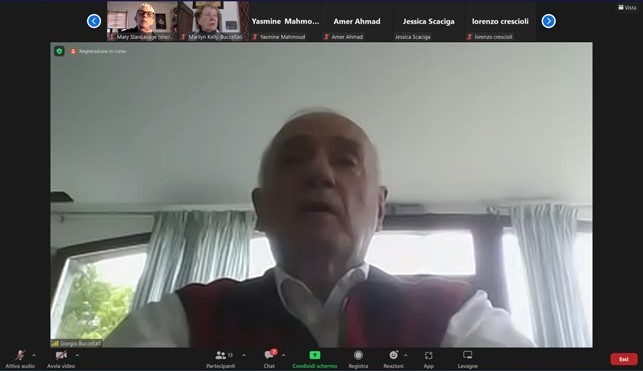
Giorgio Buccellati presented the major results achieved after the previous meeting “Beola 2” and presented the two new websites Cybernetica Mesopotamica and Digital Discourse.
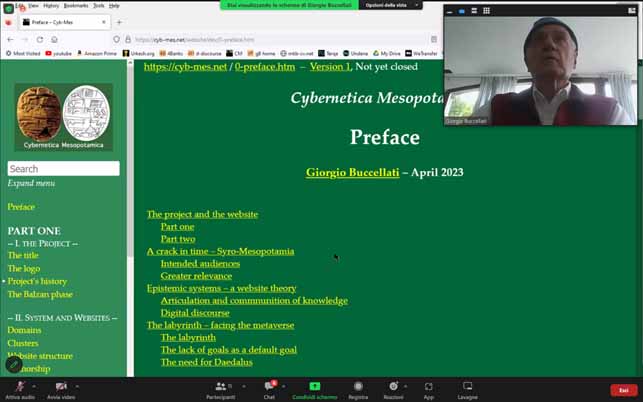
The Cybernetica Mesopotamica is the basic website collecting data from all the other companion websites, five domains in total, as it is shown in the “System domains” section of the website.

Further, Giorgio Buccellati retraced the paths of “digitality” and the digital approach of the project (particularly, the implementation of digitality to archaeology and textual analysis), starting from around the 1970s until the very present, underlining the major developments over the years, in the line of a “website approach.”
Finally, Giorgio Buccellati stressed the importance and significance of the present meeting which allowed collaborators to work together, in person, and particularly with Bernardo Forni about many different technical issues of the many programs applied to the website of the Cybernetica Mesopotamica domain.
Back to top: Report
Report by Marilyn Kelly-Buccellati of Ceramics and Glyptics

Marilyn Kelly Buccellati described to the team her current work on the Urkesh Ceramic Analysis topical book (hosted within the major urkesh.org website), realized with the assistance of Jessica Scaciga, outlining how a digital approach to the analysis of ceramics can allow a whole description and record of all the potsherds analyzed, within the larger project of the Urkesh Global Record (UGR). An important aspect of this project is that it entails an inter-planar interaction between different levels related to ceramic analysis, in a very productive dynamic approach. Specifically, the digital approach allows an easier management of big data.
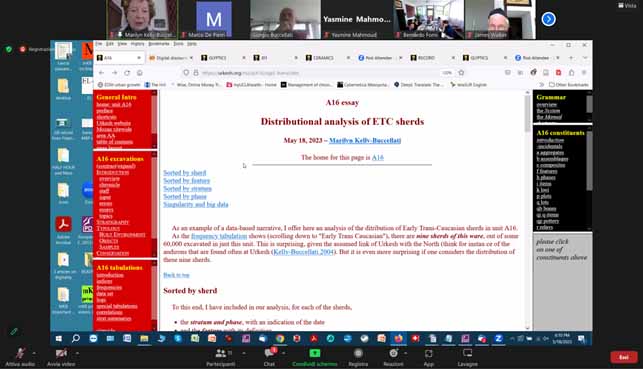
The Ceramic Book is expected to be completed by the end of September 2023.
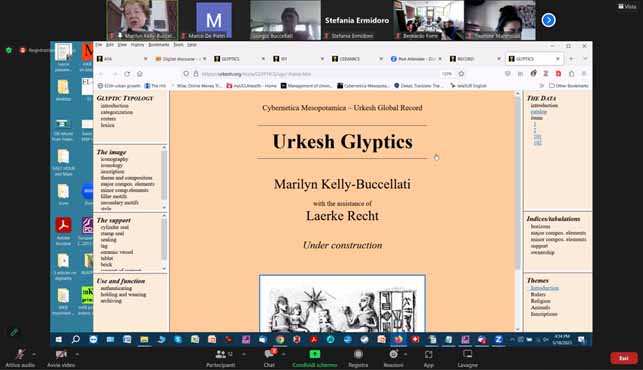
A second important domain presented by Marilyn Kelly-Buccellati is that of the Urkesh Glyptics topical book, elaborated with the assistance of Laerke Recht, which is currently being implemented and is expected to be finished by the beginning of September 2023. This website will be also connected to the website Iconographic Analysis of Mesopotamian Seals which is going to be implemented soon (see also the dedicated section).
Back to top: Report
Report by Federico Buccellati about glyptics and 3D volumetric analysis

Federico Buccellati is currently working mainly on two different projects:
- a website about Old Assyrian glyptics, creating a database devoted to this topic, connected to the aforementioned website Iconographic analysis of Mesopotamian seals; the digital approach to the study of Old Assyrian glyptics allows the realization of statistical analysis which is hardly to be achieved without the aid of the digital medium;
- the 3D documentation and digital publication of the Royal Palace of Urkesh, following the work already partially fulfilled with the volume Mozan 6; the results involve the realization of 3D models created with the EnCAB program and a volumetric analysis of the palace itself.
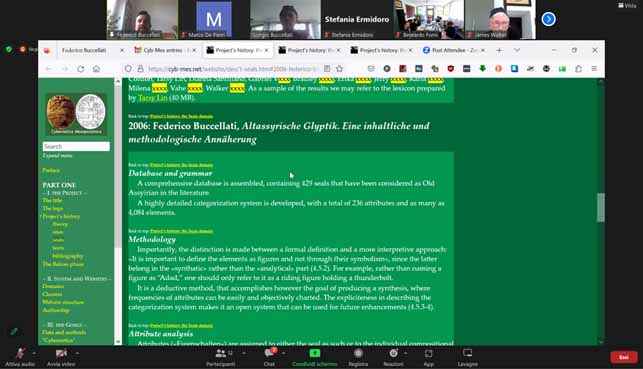

Back to top: Report
Report by Jonah Lynch on the Mes-Rel website

Jonah Lynch reported about his current work on the Mesopotamian Religion website, an attempt to be one of the first digital publications in the form of a companion website to Giorgio Buccellati’s book on Mesopotamian and Biblical religion (see here).
The creation by programs of indices (divided into “topical indices” and “multinodal indices”) allows to easily compare the opinions of different scholars on different topics related to religion in Israel and ancient Mesopotamia.
This companion website is expected to be opened very soon, hopefully by September 2023.
Back to top: Report
Report by Bernardo Forni on programming
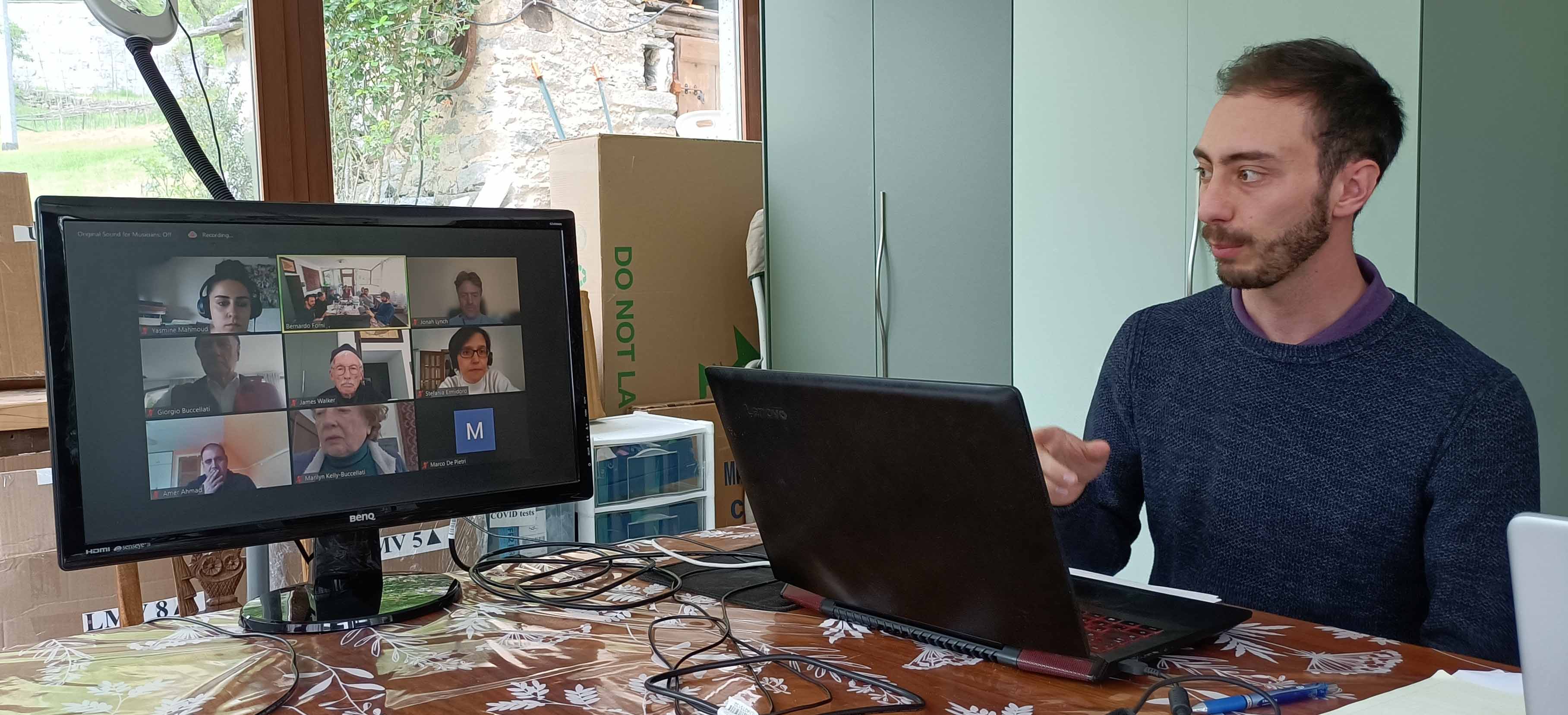
Bernardo Forni reported about the many different programs which are currently in development.
The main goals of his works consist of removing frames from the websites by converting them into a new format called MID, “Markdown Input to Display” (an implementation of the previous DABI program), allowing an easier input of data and a better output (both for what concerns display and queries, through an implemented search function).
Bernardo Forni is also the main reference person for all the collaborators as per the different technical and informatics issues.
A first attempt of conversion from the old HTML to the new MID format has been applied to the unit book A15, and to the topical book about “The Grammar”, which are now fully working with MID. The benefits of this new program are many: just to mention two of the most relevant, we can quote the possibility of creating direct links (without the need for “redirects”) and the query function which allows a very easy and complete search in all the pages of the related websites, thus saving time and increasing effectiveness.
In the next months, the main objectives are to concert to MID also the Urkesh Ceramic Analysis topical book and, in the second stage, the whole urkesh.org website.
Bernardo has also been working on the JD files for the input of data on the Urkesh Global Record, particularly focusing on implementing the “tabulation” section.
Furthermore, Bernado Forni is working on the implementation of the VWX program which is expected to be completed in some weeks (by June 2023 at most).
Back to top: Report
Report by James Walker on unit books
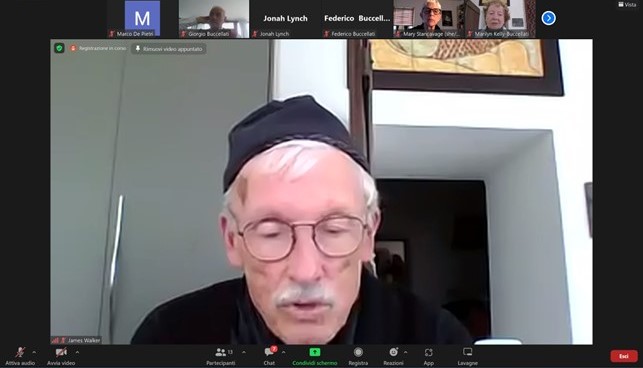
James Walker worked hard in updating many unit books of the Urkesh Global Record, converting some of them into the new MID format (such as A15). He also described the different approaches and programs used in the past, such as Perl, underlining some problems, such as missing files which may be hopefully found in the archives in Los Angeles, with the help of Mary Stancavage.
James Walker focused both on the left and right-hand sides, stressing some advantages of using MID for the unit books:
- saving time;
- avoiding mistakes due to the use of HTML.
Back to top: Report
Report by Mary Stancavage on A12 and Cotsen Lab
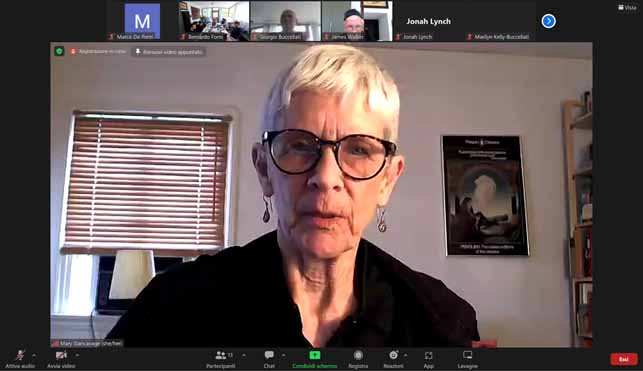
Mary Stancavage is in charge of keeping order in the archives held in the Cotsen Lab in Los Angeles (in Room A311; in this position, she can easily provide other members of the team with missing material about Urkesh and Terqa directly from the archives. She is also digitalizing, with the assistance of a couple of students from UCLA, all the material archived in Los Angeles, uploading it on the main server (a work expected to be finished by the end of 2024).
She is also working on a tablet from A15 showing architectural elements of Urkesh, specifically on the topic of the “cornerstone.”
Mary Stancavage is currently also working on the unit book A12, the underground pit at Urkesh, interpreted as an ābi. This work will be published in a proper dedicated monograph, alongside the digital unit book of the structure, which is going to be completed by September 2023.
James Walker will be coaching Mary Stancavage with the new MID program.
Mary Stancavage will be also working together with Giorgio Buccellati and Marilyn Kelly-Buccellati at the Getty Institute in the next months.
Back to top: Report
Report by Lorenzo Crescioli on unit books of the UGR

Lorenzo Crescioli is currently working on the unit books A20 and A6 (the last with the assistance of Amer Ahmad), updating data and converting the units from HTML to MID.
The work is in a good stage for the right-hand side, and the future work will mostly focus on the left-hand side.
Lorenzo Crescioli also explained some problems with labels with old definitions of q-lots and q-items.
Lorenzo Crescioli also pointed out the problem of missing pictures, which need to be found on the server of the archives in Los Angeles, with the assistance of Mary Stancavage.
Another problem regards “relays” which need to be added to the constituents of the “main roster”.
Furthermore, the left-hand sides of many unit books are going to be completed in the next months, converting them from HTML to MID. The expected deadline for completion is the end of September 2023.
Back to top: Report
Report by Amer Ahmad about unit book A6
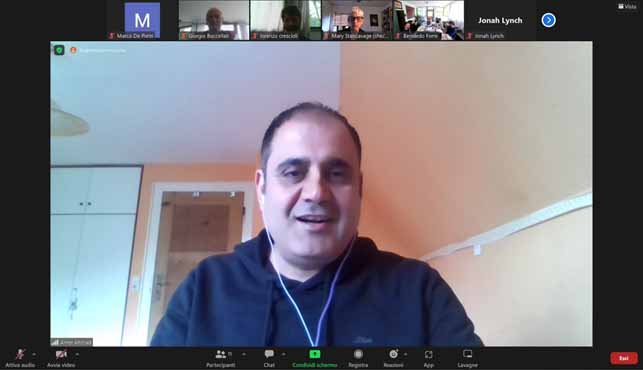
Amer Ahmad is now working specifically on the updating of the unit book about A6, particularly for what concerns the implementation of new data complementing the old data not yet uploaded online, thus far.
The deadline for this unit is the end of September 2023.
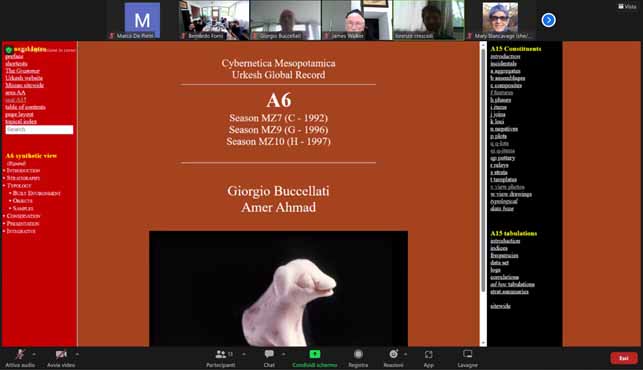
Back to top: Report
Report by Yasmine Mahmoud on Mozan Projects in Syria and J4

Yasmine Mahmoud is working on the unit book J4, aiming at finishing it (both the right and left-hand sides) by September 2023.
She is working together with Sarah Comelli, who excavated that unit in the past, trying to fix some problems with the MZA stratigraphic sequence (specifically for the year 2011).
Yasmine Mahmoud reported also some missing files (mostly about q-lots) which will be searched for in the UCLA archives; furthermore, there are also some missing “templates.”
Yasmine Mahmoud is also working on the publication of her PhD thesis about figurines from Tell Mozan, which will be also the object of a new topical book on figurines. She is also working on a topical book about “conservation.”
Yasmine Mahmoud also reported about Khozama al-Bahloul’s intent to join the project, specifically working on the unit book of A10.
Back to top: Report
Report by Yara Moualla on the Women Atelier’s Project (e-mail)
«Dr Yasmine Mahmoud invited me to develop a proposal on how to improve the women’s Atelier in Mozan. My proposal aims to transform Mozan women’s handmade crafts into marketable cultural products by adding value to every aspect of the production chain (idea, artist selection, production, distribution, consumption). I have also identified the main challenges and opportunities for the project. Finally, I suggested two models:
- creating a direct link between arts and crafts;
- relying entirely on local women for production.
I am still waiting for feedback and input so we can move forward.»
Back to top: Report
Report by Arwa Kharobi on Anthropological Analyses (e-mail)
«Dear all, I regret not being able to join you today but hopefully next time! Here is a brief report on what I am working on now regarding the human remains from Tell Mozan.
- Writing a paper presenting the first full set of dental data from Tell Mozan (Ancient Urkesh) using bioarchaeological methods (paleopathology, stable isotopes as well as metric and non-metric traits). Patterns of dental caries and with tooth wear were recorded to be combined with the isotopic results regarding dietary estimations. We report isotopic analysis (87Sr/86Sr, δ18O, and δ13C) from a number of [75] human permanent teeth which were also used for an additional biodistance analysis based on ASUDAS. The multidisciplinary approach investigates the ancestral background of Urkesh and the degree of temporary or more permanent relocation from other settlements. The hypothesis of the existence of a homogeneity of the oral health of the inhabitants of Urkesh can be advanced. Metric and non-metric dental traits favour Mesopotamian traits. Analysis regarding diet confirm an “agricultural & historical” type food, rich in sugar. These results filling the gap of dental data in the region, reconstructing the diet and define biological distances between Urkesh and other Middle Bronze Mesopotamian populations. Submission is planned for June 2023 in the journal is the American Journal of Biological Anthropology. Co-authors: Chris Stantis, Nina Maaranen, Federico Buccellati, Marilyn Kelly-Buccellati and Giorgio Buccellati.
- Developing a new study with Dr Antony Colombo (Bordeaux University). The goal is to find out if there are differences between individuals in terms of deficiencies during development (thus linked to food which could be crossed with the isotopic results) and morphological variations (micro-evolution, phylogenetic marker, which can be related to cultural variations and potentially crossed with genetic data).
- Collaboration with Dr Tina Saupe (Evolutionary Biology Centre, Uppsala University) for the DNA analysis, work in progress, expect to have the results back by the end of this year. Those two projects are on dental samples already in hand (The old one and limited to 30). In the future I will need more dental samples and some bone ones (Ribs) to develop a new pilot study on stress and migration in the framework of the ERC project that I would like to submit in October 2023, where Mozan is one of the Five main archaeological sites included.
A schedule of what I am planning to do for Summer:
- June 2023: Finishing the Urkesh/Mozan Studies 8 (A place for the Dead: An overview of Burial Practices at Tell Mozan in the Middle Bronze Age);
- From July and on: Start encoding into the UGR (anthropological data).»
Back to top: Report
Report by Stefania Ermidoro on “conservation” and “site presentation”
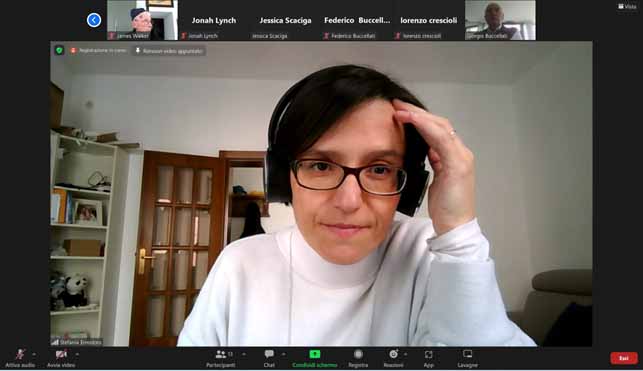
Stefania Ermidoro is now starting again to work on the project after a break. She has been working on “conservation” and “site presentation” and her will is to continue working on these topics, particularly focusing on the reports on the wall conservation of the Royal Palace.
Furthermore, she is planning to implement the section on the material from the ābi and she will be also supporting Lorenzo Crescioli and Amer Ahmad for the wall conservation of the unit book on A6.
She is going to finish this work hopefully by the end of August 2023.
Back to top: Report
Report by Marco De Pietri on urkesh.org and 4banks
Marco De Pietri is currently working on updating the whole urkesh.org website, starting converting some sections of it from HTML to MID (specifically, “The Grammar”), with the assistance of Bernardo Forni.
Moreover, he is trying to create as many connections as possible (with hyperlinks) between different sections of the urkesh.org website and also with the other companion websites of the “4banks” hub.
He is also working on a monograph about “Necromancy” for the “Mes-Rel” website.
Furthermore, he is currently assisting Jonah Lynch and Laerke Recht with the conversion of “Mes-Rel” and CAR websites from HTML to MID.
The expected deadline for the aforementioned works is the end of August 2023.
Starting from September 2023, he is going to devote a larger part of his time to the “Mes-Pol” companion website, establishing a work team and starting writing critical bibliography and notes for Giorgio Buccellati’s book Alle origini della politica (Jaca Book 2013) / At the Origins of Politics (Routledge: forthcoming). This companion website is expected to open hopefully by the end of 2024.